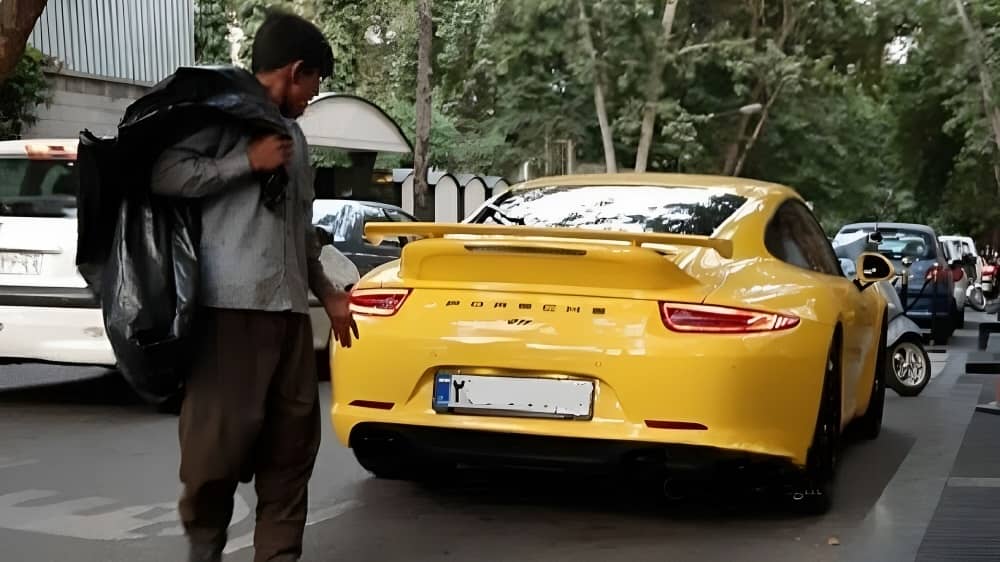
In 2003, Iran’s Supreme Leader Ali Khamenei introduced the ambitious “Iran’s 20-Year Vision” plan, aiming to position the nation as a regional leader in economy, science, and technology by 2025. Spearheaded by then-President Mohammad Khatami, this strategy was designed to unfold over five four-year terms, with each successive government continuing its implementation. However, as 2025 approaches, the reality starkly contrasts the envisioned future.
Far from achieving its lofty goals, Iran has seen a significant regression in human and social indicators, save for an expanding class divide, increased socio-political oppression, and escalated warmongering activities. Despite its rich resources, Iran’s leadership has consistently diverted funds towards personal enrichment, terrorism, and controversial nuclear and missile programs, leading to domestic impoverishment and regional instability.
The state-run newspaper Hammihan, in a candid November 19 article titled “Not Becoming the Leading Power,” lamented the nation’s drastic fall from its aspirational goals. The publication highlighted Iran’s descent from a potential regional powerhouse to a lower-tier nation, echoing the sentiments of former regime president Ali Akbar Hashemi Rafsanjani, who, before his death in 2016, acknowledged the nation’s deviation from the vision plan and the resulting economic contraction and missed opportunities.
Classified documents confirm the #IRGCterrorists iron grip on #Iran's oil revenue, further fueling economic inequality and perpetuating the regime's oppressive rule.https://t.co/genvxrsGQJ
— NCRI-FAC (@iran_policy) May 24, 2023
Former President Khatami, tasked with the plan’s initial implementation, admitted the project’s failure, acknowledging the unfeasibility of achieving its objectives under the current circumstances. Mahmoud Ahmadinejad, despite presiding over a period of record oil revenues and significant financial expenditure, also conceded the regime’s divergence from its ambitious goals.
Hassan Rouhani, who once championed the vision plan, eventually joined the chorus of leaders acknowledging its failure. In 2007, as head of the Center for Strategic Research of the Expediency Discernment Council, he had lauded the plan as akin to a national strategy. Yet, he later became part of a leadership engaged in a blame game over the plan’s shortcomings.
The Arman Emrooz newspaper’s November 18 report paints a bleak picture of Iran’s global standing. Despite its rich resources, Iran languishes at the bottom of international indices for citizen well-being, freedom, and comfort. The Legatum Global Ranking places Iran at a dismal 126th out of 167 countries, with particularly poor rankings in organizational conditions, personal freedoms, and governance.
Household expense and income data further underscore the deepening plight of Iranians. The state-run newspaper Jahane Sanat noted an alarming trend: increased spending on basic needs like housing and food, coupled with decreased expenditures on health, recreation, education, and clothing.
While the people of #Iran suffer from hunger and poverty, the regime invests millions in religious influence abroad. Watch and judge the admissions of this #IRGC official pic.twitter.com/XXXYj2dvRS
— NCRI-FAC (@iran_policy) September 8, 2023
The Legatum Prosperity Index over the past five years reveals a stark contrast between Iran’s current state and the ambitious vision of 2003. The weekly magazine Tajaarat Farda’s 2019 article highlighted Iran’s persistently low welfare performance, ranking it lower than countries like Kenya and Zambia, with nations like Myanmar and Togo showing more prosperity.
Iran’s democratic governance index has also witnessed a decade-long decline, with a notable erosion of individual freedom and social capital. Only a handful of countries – Yemen, Eritrea, Sudan, and Syria – fare worse than Iran in these aspects, with even South Sudan ranking higher in terms of individual freedom.
The Hammihan newspaper’s November 19 article encapsulated this decline, acknowledging that not only has Iran failed to progress since the plan’s inception, but it has also regressed significantly in many of the envisioned indicators and objectives. This failure marks a stark departure from the aspirations of two decades ago, leaving Iran grappling with challenges far removed from its once hopeful vision.

MEK Iran (follow us on Twitter and Facebook), Maryam Rajavi’s on her site, Twitter & Facebook, NCRI (Twitter & Facebook), and People’s Mojahedin Organization of Iran – MEK IRAN – YouTu







